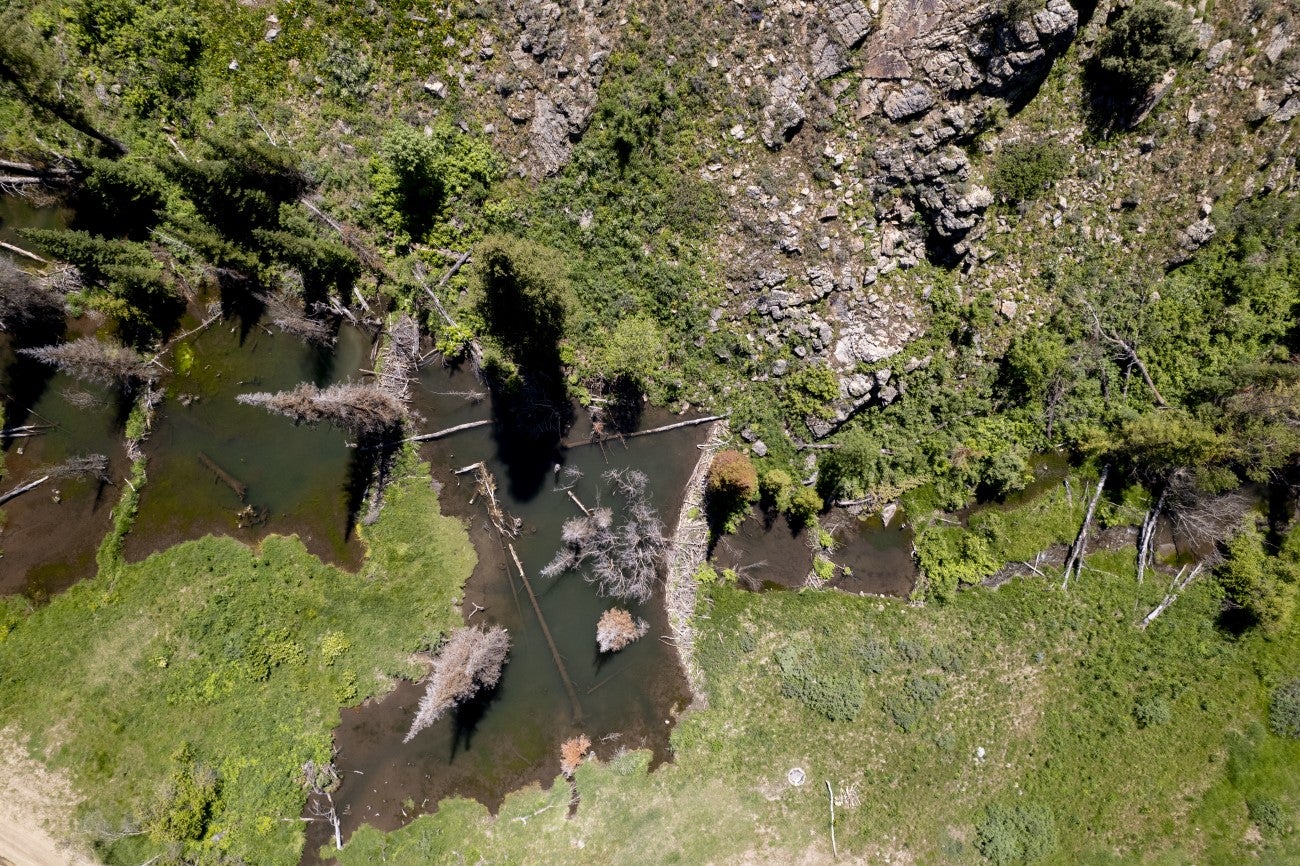
During Jodi Brandt’s seven years at Boise State, her research has focused on issues vital to the Intermountain West, including urban growth, farmland preservation and water. In 2018, Brandt received a grant from the U.S. Department of Agriculture to use new satellite data to map water in semi-arid regions like Southern Idaho.
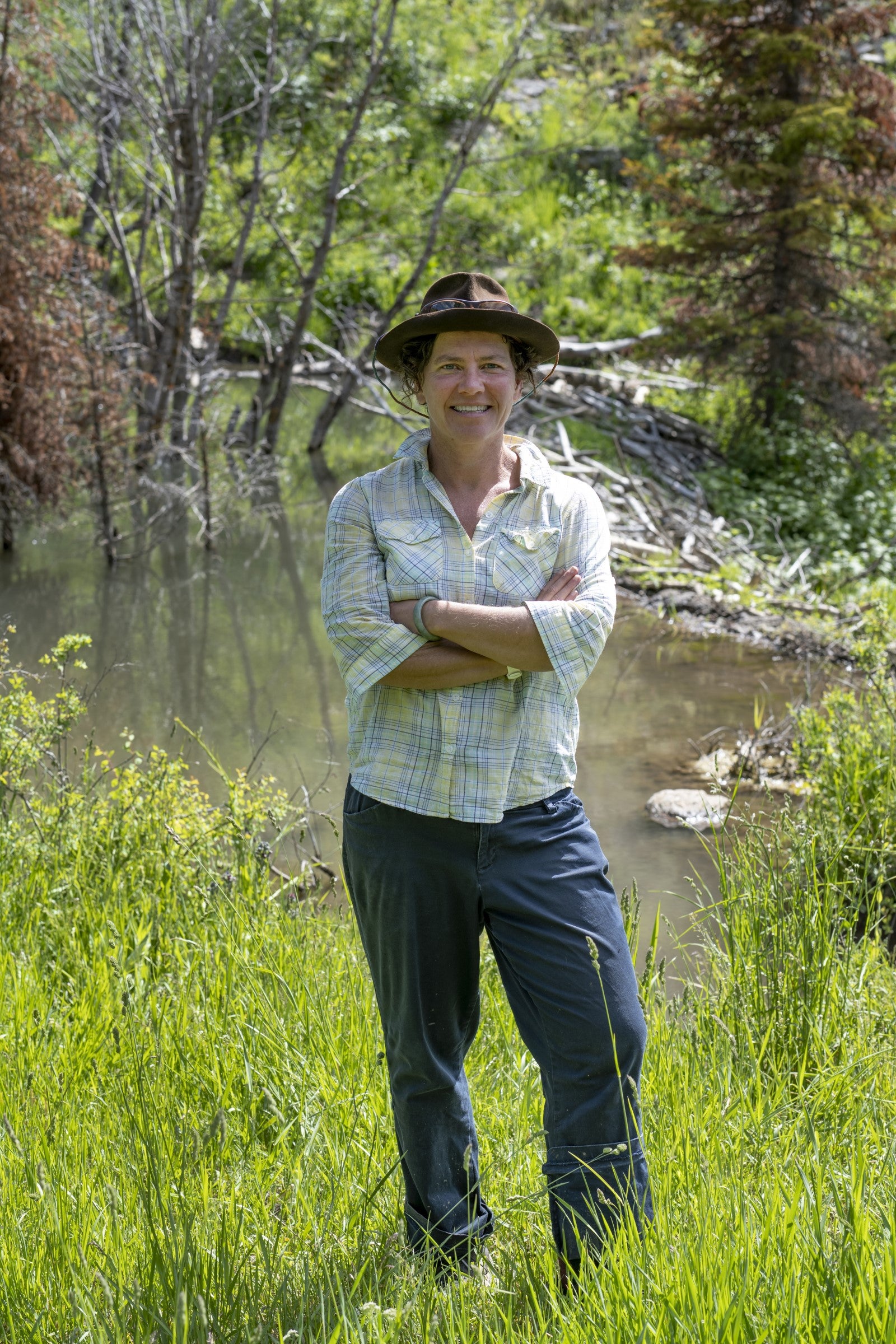
“Farmers and ranchers are always grappling with water scarcity,” said Brandt, an associate professor of human-environment systems in the College of Innovation and Design. As Brandt and Ph.D. student Nick Kolarik started their fieldwork, they spoke with farmers, ranchers and officials. An unexpected theme emerged: “beaver fever,” Brandt said.
Brandt found people interested in, or already enlisting beavers – the famous rodents nearly hunted to extinction for their pelts hundreds of years ago – to heal degraded terrain. Beaver dams hold water, creating habitat and mitigating drought. Beaver rewilding, or reintroducing beavers to landscapes, has gone on in the U.S., Europe and Canada for years. Rewilding has been the subject of documentaries, radio programs and the inspiration for nonprofit organizations like The Beaver Coalition that promotes human/beaver coexistence.
Beavers are not universally beloved. In 2021, the federal government killed close to 25,000 of them it deemed nuisances. But many people do want beavers on their land. California recently launched a major beaver restoration program at the urging of agricultural, tribal and business partners. Between 50 and 75 beaver rewilding projects are taking place in Idaho, Brandt said.
These projects include reintroducing the animals in places where woody materials like cottonwoods and willows are available for dams, as well as “beaver mimicry,” or building dam-like structures that imitate beaver activity and in some cases, encourage the animals to take up residency.
“We made the connection,” Brandt said. “We were mapping water on the landscape at the same time these beaver projects were changing how much water was there and when it was there.”
Brandt saw a research opportunity. She partnered with Joe Wheaton, a professor of riverscapes from Utah State University’s Watershed Science Department who specializes in using beavers and beaver mimicry to restore streams. They received a grant from NASA to connect Brandt’s satellite-based water data to Wheaton’s work. Their four-year project will provide a clearer picture of how beavers are affecting western landscapes.
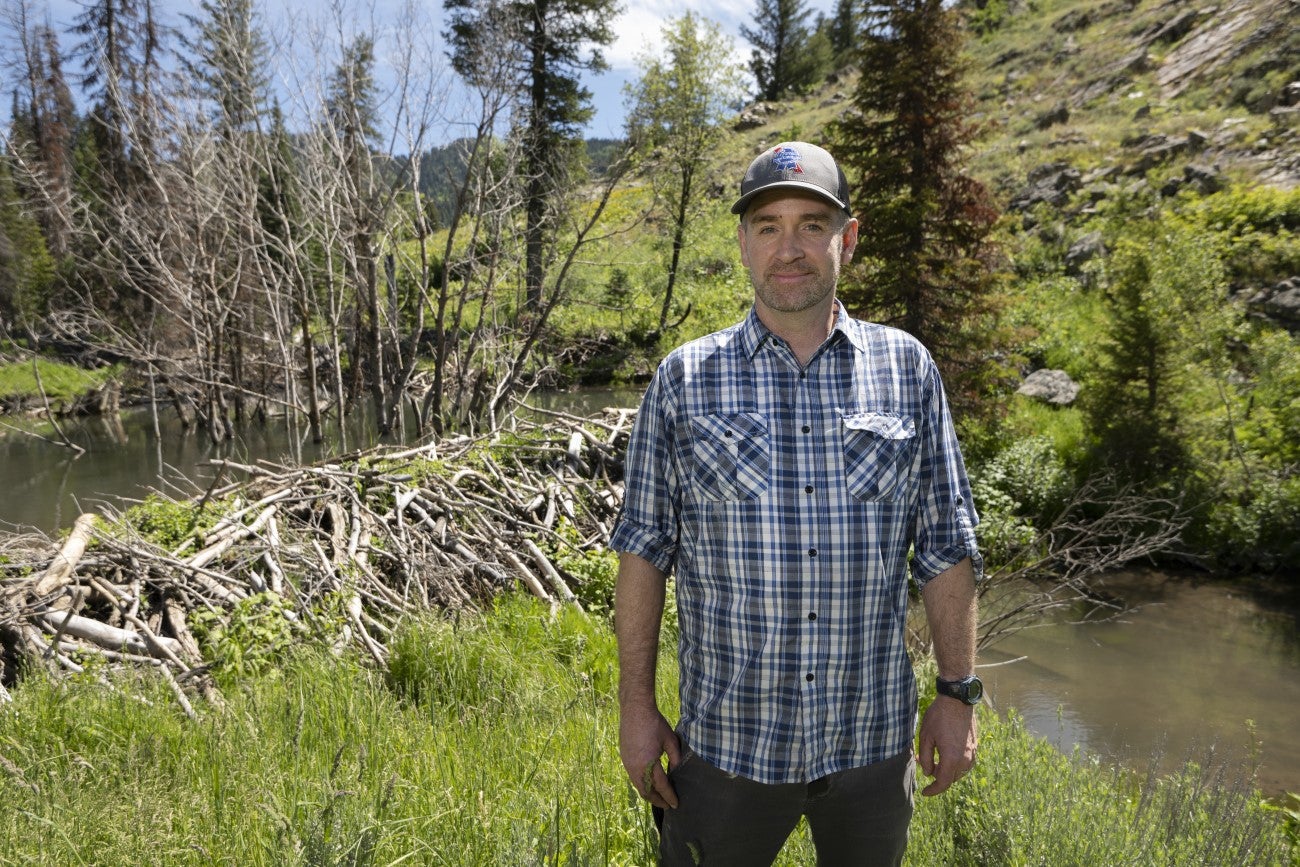
Beavers are cool. Here’s why
Because of snow melt, western streams run high, with a constant pulse from April to mid-June.
“But if no beavers are stopping that water, it runs away. It’s gone.” Brandt said. “If a beaver is there building dams, that creates more groundwater infiltration and ponding.”
The “hydrologic inefficiency” that beavers create provides water and forage for cattle, especially later in the season when temperatures rise.
“From the perspective of nature, beaver dams create wet meadows and surface water riparian zones that are magnets for all kinds of creatures,” Brandt said. “From the perspective of a rancher or farmer, beavers can bring huge benefits.”
Seeing is believing
In the summer of 2022, Brandt and Wheaton, their teams and the NASA program manager visited Jay Wilde, a rancher on his land near Preston, Idaho. Wilde worked with Wheaton in 2014 to reintroduce beavers to Birch Creek, a tributary of Mink Creek, which is a tributary of the Bear River, itself the largest tributary of the Great Salt Lake. They successfully restored the creek – now home to more than 200 beaver dams – to provide water for Wilde’s cattle and horses.
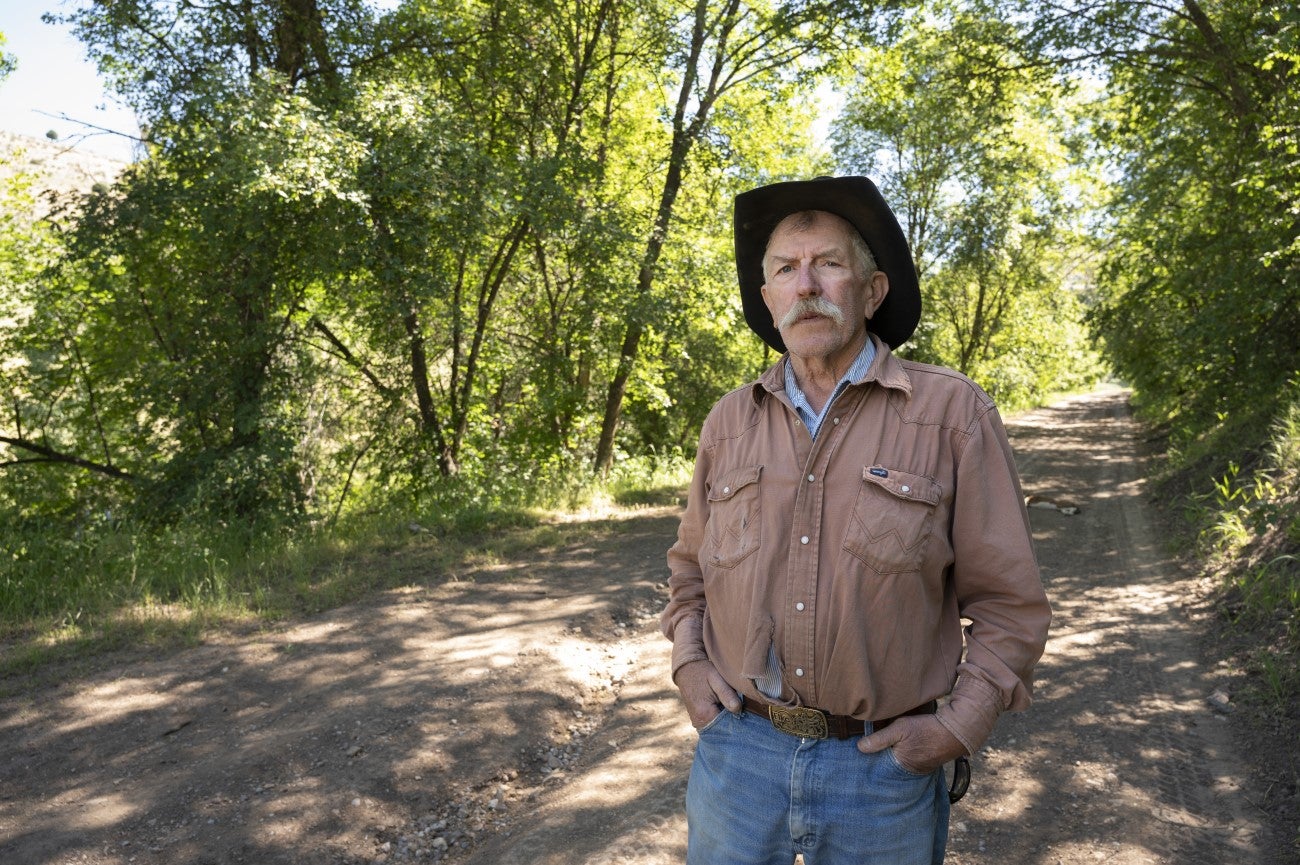
Satellite imagery helps Brandt’s research team map large areas, but in-person visits to rewilding sites help researchers make sure they’re interpreting that imagery correctly. In addition to collecting information about vegetation density, the presence of water and more, the Wilde visit provided a first-person history of the site. Wilde has lived and worked there for more than 60 years and has seen its transformation. Because of beaver activity at Birch Creek, Wilde now has 42 additional days of streamflow each year for his cattle. Beavers have also improved the habitat for insects, birds and native fish, notably Bonneville cutthroat trout.
Wilde has become a vocal beaver rewilding advocate after a “paradigm shift,” he said, that helped him see beavers as assets, not pests. “The more I learned, the more it made sense that we need them in these watersheds. It’s been rewarding for me to see it happen and see so many people interested in studying it.”
New tools
In addition to painting a picture of how beavers are remaking landscapes, Brandt’s and Wheaton’s project includes developing a tool similar to Google Earth that will help those involved in beaver restoration – including the Bureau of Land Management, the U.S. Forest Service, Idaho Fish and Game and the Shoshone Bannock Tribes – monitor their projects remotely, saving time and resources.
Citizen scientists will also play a part. A new cell phone app will let people monitor beaver activity and submit photos of beavers and beaver dams to a global database.
“We can’t see it all from space, even with the best monitoring tools,” Wheaton said.
Partnerships and hopeful outcomes
Brandt said she relishes this work. “Beaver restoration is a win-win. We don’t get too many of those in conservation.”
Beavers, being the “charismatic species that they are” help bring attention to the people doing the hard labor of stream restoration like ranchers, tribes and natural resource agencies, she said.
“This is science that is collaborative, where people of different disciplines with different perspectives get together and do something more than they could do alone.”
Rewilding in Idaho
– Researchers estimate that approximately 13,000 beaver dams exist in Idaho. This is less than 5% of the potential number based on historical estimates.
– Around a fifth of the beaver restoration projects taking place in Idaho are incorporating beavers. The remainder are using techniques including beaver mimicry, or building dam-like structures that imitate beaver activity and in some cases, encourage the animals to take up residency.
“Beaver rewilding is something that if it were implemented on a broad scale, could affect the landscape in positive ways, making it more resilient to threats like wildfire.”
Jodi Brandt
Nick Kolarik, Ph.D. student in ecology, evolution and behavior
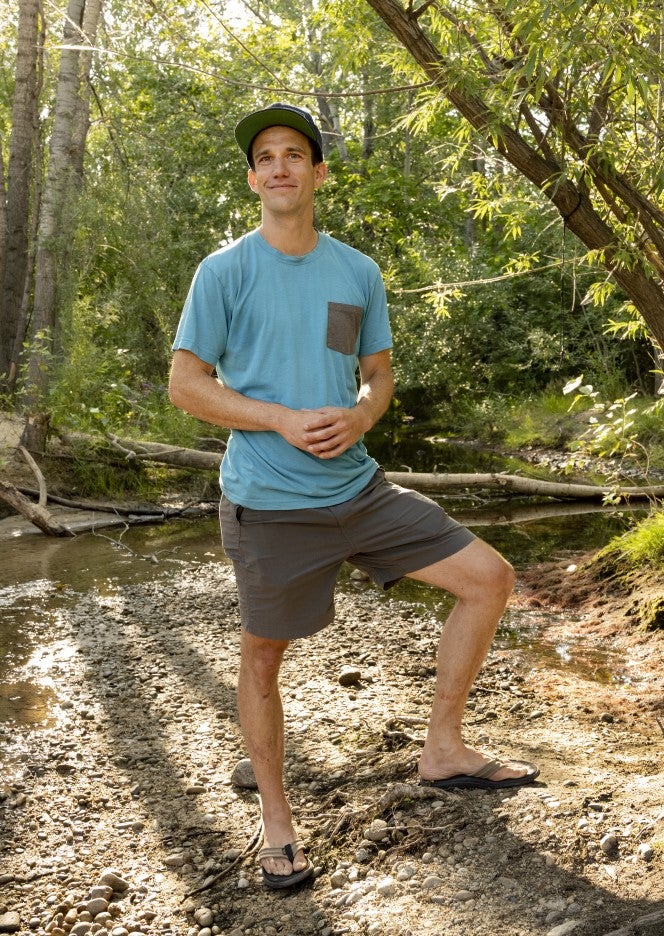
Kolarik, originally from Baltimore, Maryland, is part of the beaver rewilding research team. Kolarik is a 2021 recipient of a Future Investigators in NASA Earth and Space Science and Technology award. His work with Brandt includes creating datasets that measure changes in water resources because of beaver rewilding.
“So much of the conservation discourse revolves around human-wildlife conflict,” Kolarik said. “While there are conflicts with beavers, this project seeks to strategically partner with wildlife to realize conservation goals. Solutions that benefit all facets of social-ecological systems are difficult to identify, but we are optimistic about what partnering with beaver could bring to dryland systems throughout the West.”
Post-doctoral researcher Nawaraj Shrestha joined the project in the summer of 2022. Brandt said research opportunities are also available for undergraduates interested in monitoring beaver rewilding.
By Anna Webb
You can't write about beavers in Idaho without mentioning the parachutes
In the years after World War II, beavers were getting in the way of people building homes in Central Idaho. Idaho Fish and Game rounded up 76 beavers and, using quick-release wooden boxes attached to parachutes left over from the war, dropped the beavers into what is now the Frank Church River of No Return Wilderness Area. All but one beaver survived the trip. The animals thrived and became Idaho lore.
Photo courtesy of the Idaho Department of Fish and Game
